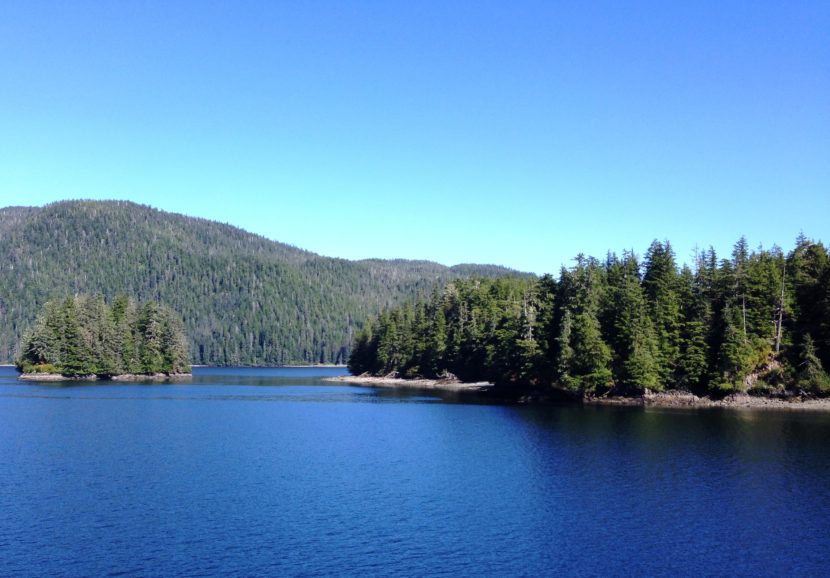
Could President-elect Donald Trump and the incoming Republican-led Congress change logging plans in Southeast Alaska? Changes to the Tongass forest plan amendment, a contentious Forest Service regulation, are possible.
The Tongass Land Management Plan amendment is on its way to being finalized next month. The plan aims to move the Southeast timber industry away from logging old-growth forests over the next 16 years. Both environmental and logging industry groups have filed objections to the plan.
Environmental groups argue the transition can be made faster while industry groups want a larger assessment of young-growth stocks and to slow the transition. Several objections to the amendment are being evaluated by the U.S. Forest Service. Any changes will be announced later this month.
So when President-elect Trump and a Republican-led Congress begin work in January, could the Tongass amendment be on the table? Here are some possibilities.
Let’s start with Congress and the Congressional Review Act or the CRA.
“The Congressional Review Act gives Congress the ability to disapprove of federal regulations that have been issued within a certain period of time,” said Sofie Miller, a senior policy analyst at the George Washington University Regulatory Studies Center.
“So right now we’re looking at federal regulations that have been issued beyond about May 30 according to the Congressional Research Service. After Congress disapproves of those rules, they would go to the president,” said Miller. “If the president signs that into law, then it would overturn the rule in question and the agency that issued the rule would not be allowed to issue a rule that was substantially the same.”
The CRA has only been successfully used once during the George W. Bush administration. When Bush came into office, Republicans also controlled Congress.
“So we have a similar makeup in the sense that the new incoming president that disagrees with some of the past administration’s regulations and with a Congress that is politically aligned with that president,” said Miller. “They now have the ability to successfully use the Congressional Review Act.”
As to how the CRA can be used, that’s a hard question to answer. The Tongass amendment falls under the 2012 forest planning rule, a result of changes made to a 1982 Forest Service regulation that affects forest planning nationwide. The Bill Clinton, Bush and Barack Obama administrations all worked to make the rule more flexible for wildlife requirements.
The planning rule itself is out of the CRA’s reach, but the amendment could fall under its broad definition.
“One thing that’s interesting too is that the actions Congress takes under CRA are not judicially reviewable. So if they want to expand that bucket somewhat, I’m not sure that there’s necessarily a check there to prohibit it,” said Miller.
Also, A CRA bill can’t be amended and takes 51 votes in the Senate, not the usual 60. Miller said the CRA is a “blunt tool,” meaning that Congress wouldn’t be able to tell the Forest Service what they would like to see. A new amendment would just have to be different.
Miller notes that there are other possible ways Congress can manipulate regulations through funding appropriations and changing what authorities the Department of Agriculture and the Forest Service have.
As for Trump, who campaigned in the Pacific Northwest on bringing back sawmill jobs, he can’t change the Tongass’ fate with a stroke of a pen. Tom Waldo, a Juneau staff attorney with Earth Justice, said Trump could direct the Department of Agriculture or the Forest Service to change the amendment if it came onto his radar.
“At a minimum, the Forest Service would have to provide public notice of their intent to change the plan and provide an opportunity for members of the public the raise objections, or comments or concerns about those changes,” he said.
If Trump took a more broad approach and wanted to change the 2012 planning rule, the same idea would apply and a lengthy process with public comment would begin. Waldo said that depending on the changes, a new environmental impact statement could be needed for either option.
He said the topic of the potential changes to the amendment has been on people’s minds in Southeast, but all routes to significant change would be long ones.
The logging industry is still pushing back against the move towards young growth. Owen Graham of the Alaska Forest Association said the logging group is trying to persuade the Forest Service to back away from the amendment.
“We’ve also reached out to our congressional delegation and asked them to try to legislate either a delay or a complete rescission of this record of decision depending on whether it gets signed or not,” said Graham.
